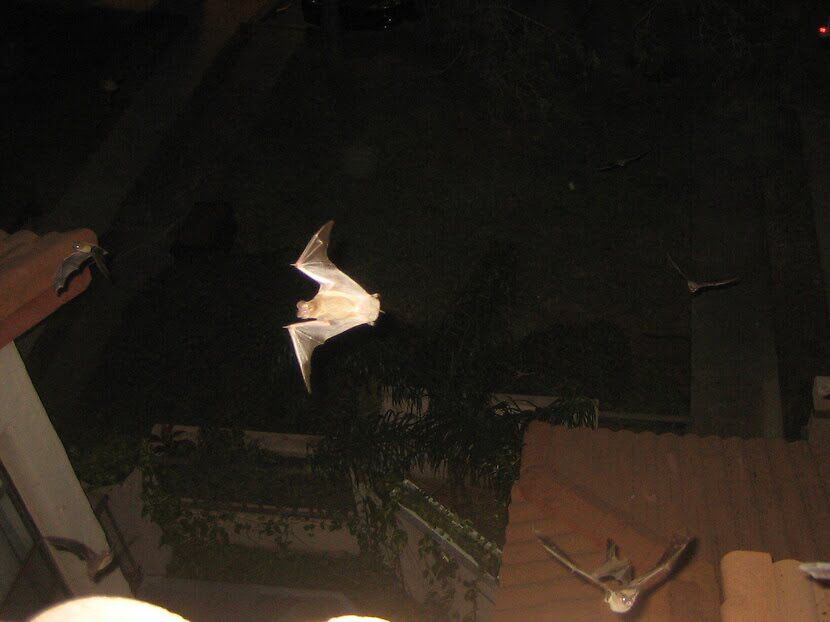
There are a number of different myths and beliefs about bats, and many people will have been told these things as children and may still believe them. This article looks to dispel some of the common myths about bats.
Are Bats Blind?
This is one of the commonest misconceptions that many people will have about bats, but the fact is that bats do have fully functioning eyes, although it is fair to say that bats' eyesight is most effective in the dark. Bats do not always use their eyesight as their primary method of identifying their surroundings, with the majority of bats using echolocation to identify the trees and buildings around them, and especially for identifying their prey when flying at high speed.
Their eyesight does become more useful when they are in their roosts, and will use their eyes when looking at their surroundings and for navigating past obstacles and other bats. The dependence on echolocation will vary depending on the species of bat, and there are some species that can actually boast better eyesight than humans.
How Does Echolocation Work?
Echolocation is the term that is used to describe the method that bats, and other animals will use to identify their surroundings, and particularly for identifying their prey. The principle of echolocation is that the bat will emit a call of a very high frequency, and will then listen to the echoes bouncing off their surroundings and from other animals in the vicinity. They will then use these echoes to identify the size and location of the various animals and inanimate objects around them.
The type of call that is emitted can vary from species to species, with the different species having developed calls with various frequencies to suit their surroundings and their favored prey. In most bat species that use echolocation, the frequency of their calls will increase as they get closer to their prey. However, there are some species of moth that have learnt to identify these calls and will flee, so the bats that hunt these moths have learnt to cease their calls as they approach their prey.
How Do Bats Fly?
Much like other flying animals bats do indeed have two wings which they use to push the air beneath them, and also use the wings for gliding through the air. For this reason the bats will generally have quite a large wingspan, one that is many times the size of the bat's body. These wings have a thin membrane which is stretched between the wing bones and joints that is very light, meaning that the bats are well suited to flying.
However, when you compare the wings of bats with those of other flying animals, the number of joints in the wing demonstrates that bats are much more talented and suited for flight. One of the key benefits of this is that the wing is much more flexible, and can be drawn closer to the body to streamline the bat when it is catching its prey in the air. The dexterity of the wing also means that bats can generally change direction much more quickly than birds, with some bats able to make a 180-degree turn in flight in a distance that is less than their own wingspan.
What Do Bats Eat?
The vast majority of bats are insectivores, meaning that they eat all manner of different insects. These bats are particularly noted for eating flying insects, and the echolocation mentioned above is particularly useful. Because of their preference for eating flying insects, bats play a vital role in managing pest species such as mosquitoes and moths in many agricultural areas. Many bats will show a preference for eating the same prey repeatedly, and will often roost near bodies of water because of the prey on offer there.
Although around 70% of bats do eat insects, there is a significant minority of bats that have adapted to survive on other food sources. The majority of these remaining species are bats that only eat fruit, but there are a very small number of species that have adapted to survive by eating blood or fish. These can play a vital role in the pollination and the spreading of seeds for the fruit that they have adapted to eat.
Go back to the pestcontrolbat.com home page.
Copyright 2021 - pestcontrolbat.com
Nationwide Bat Control